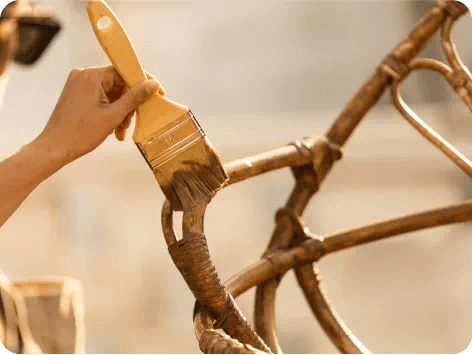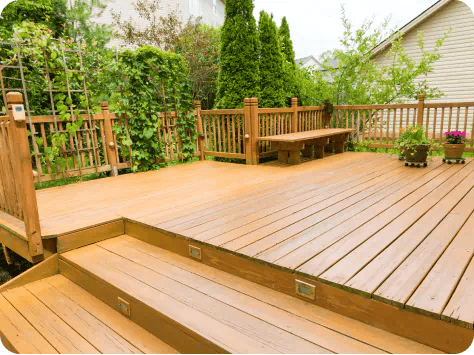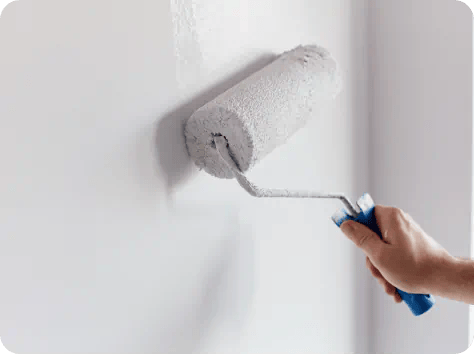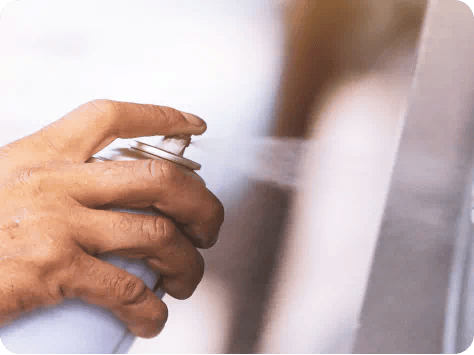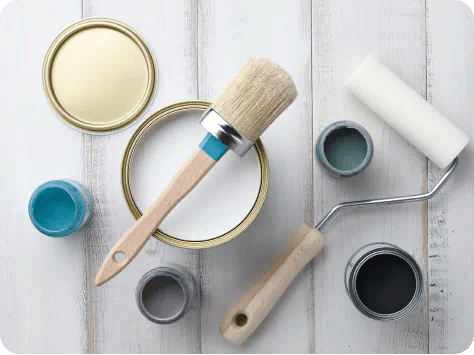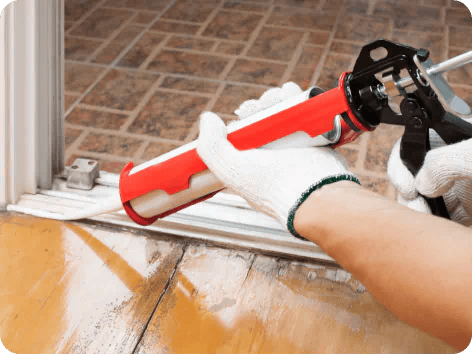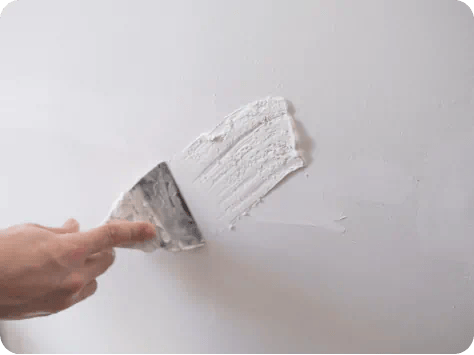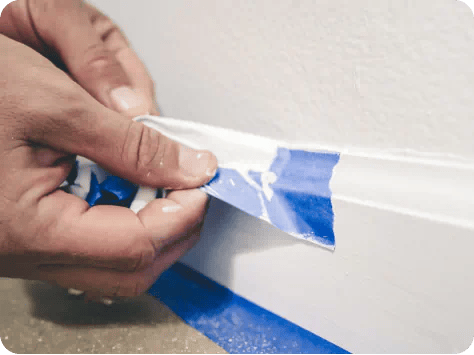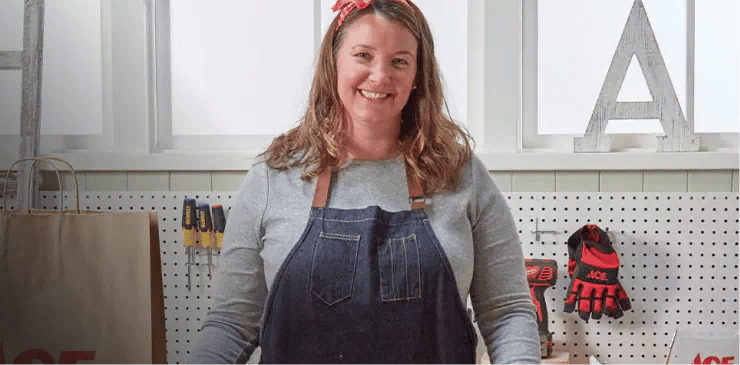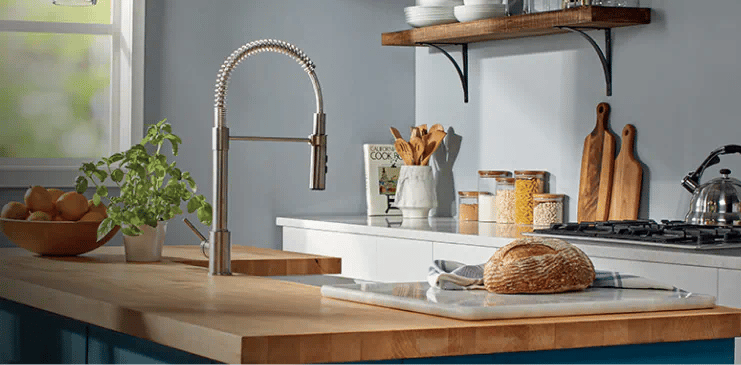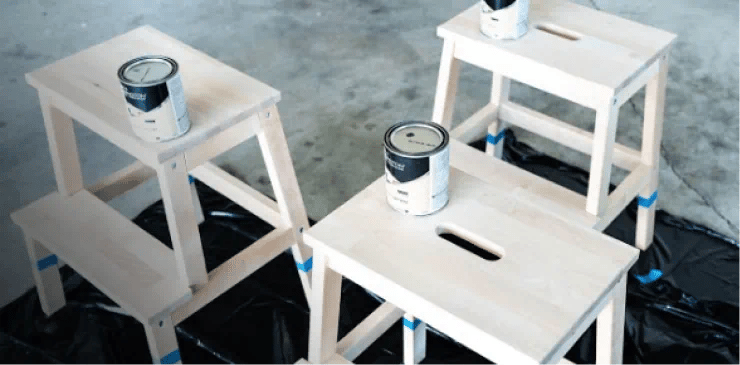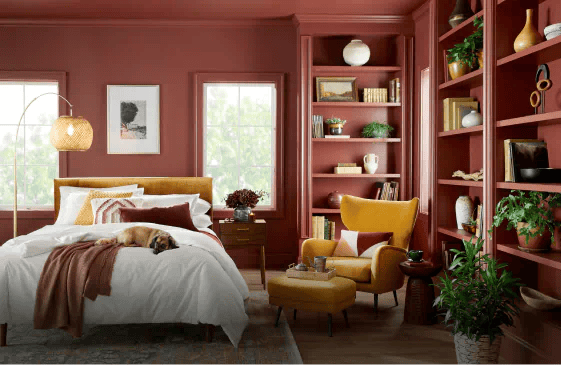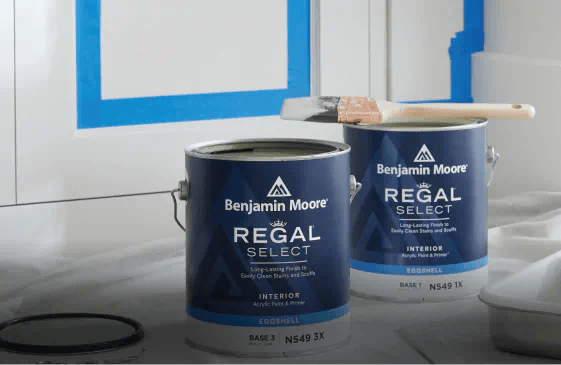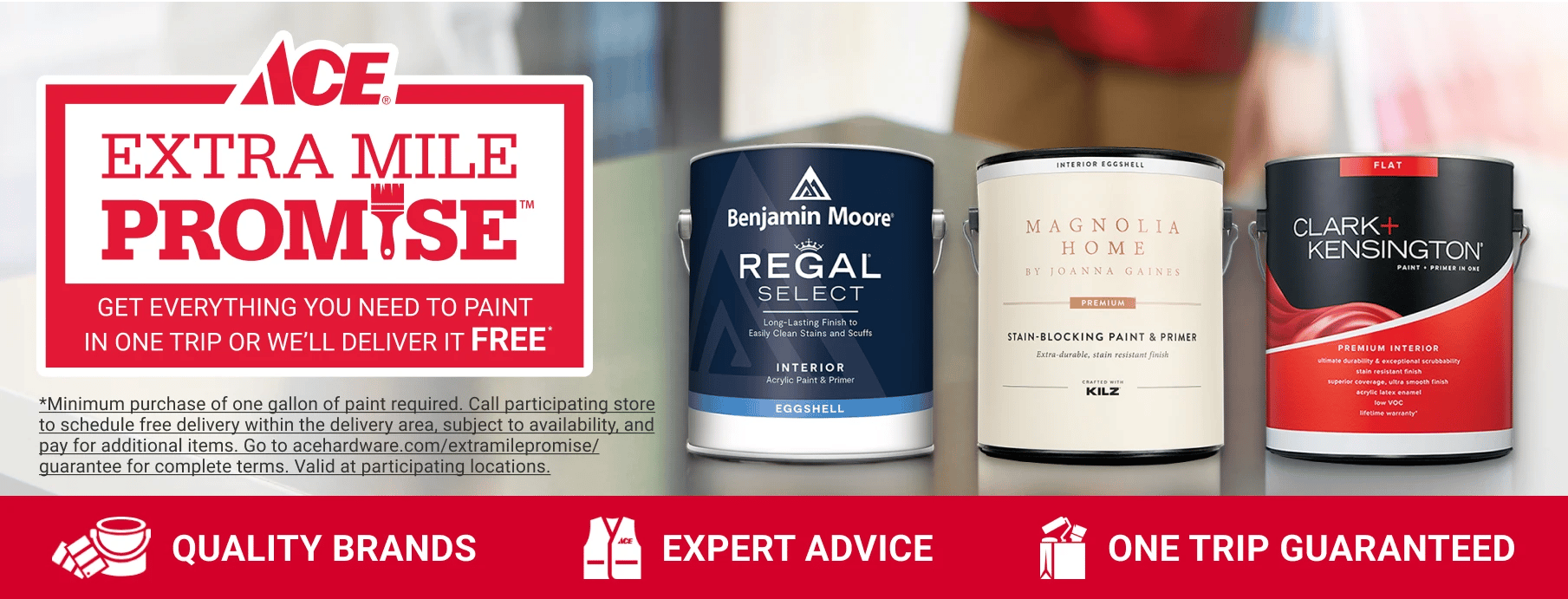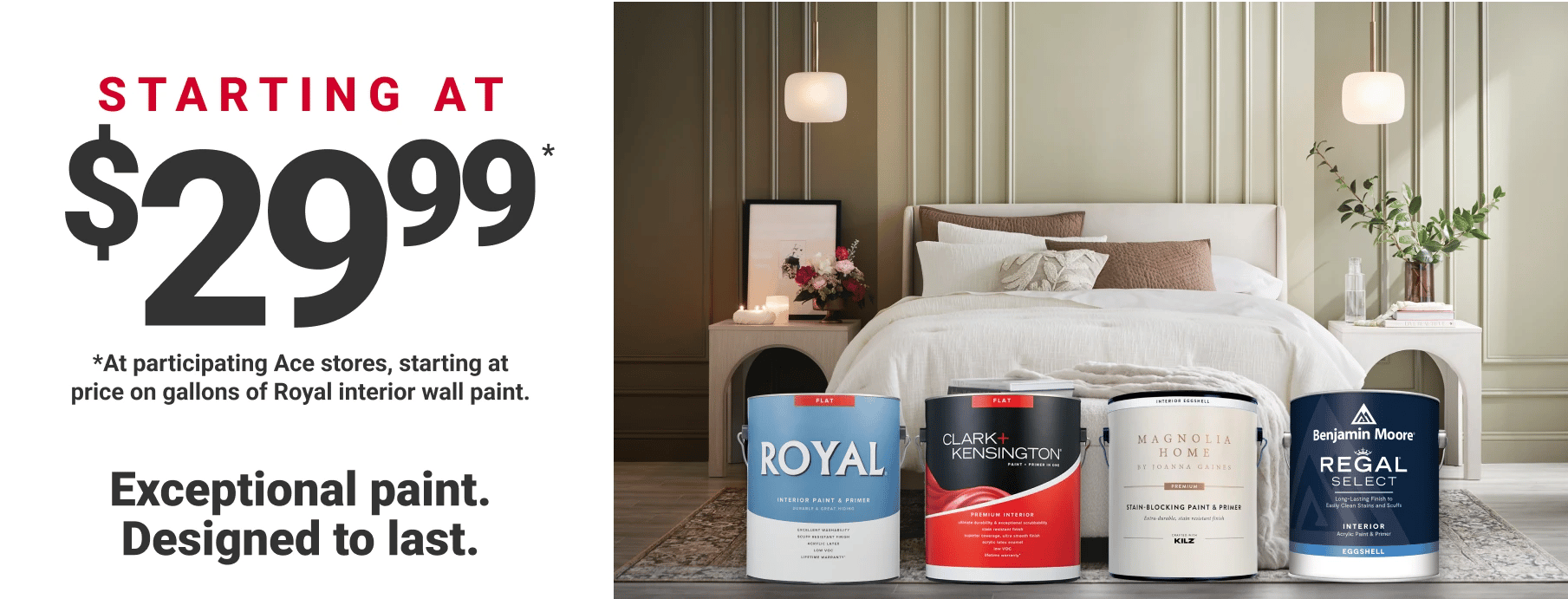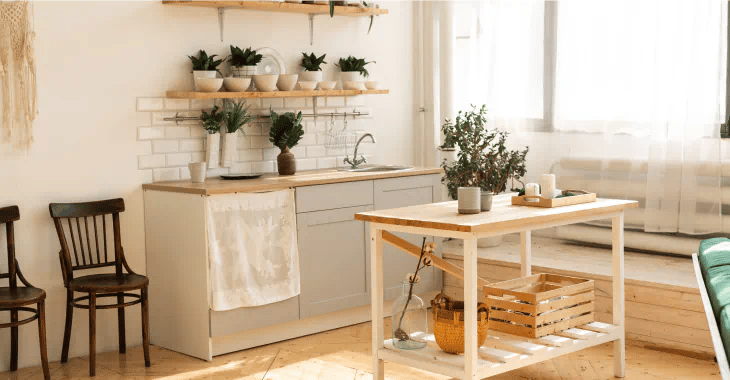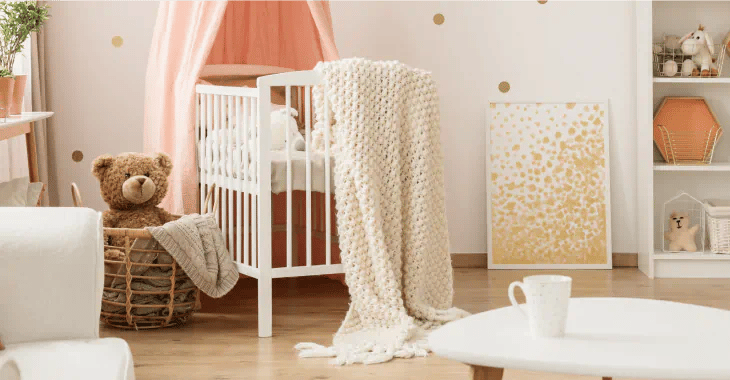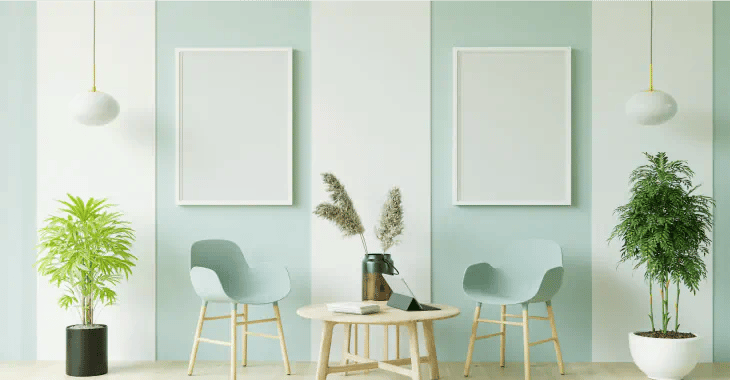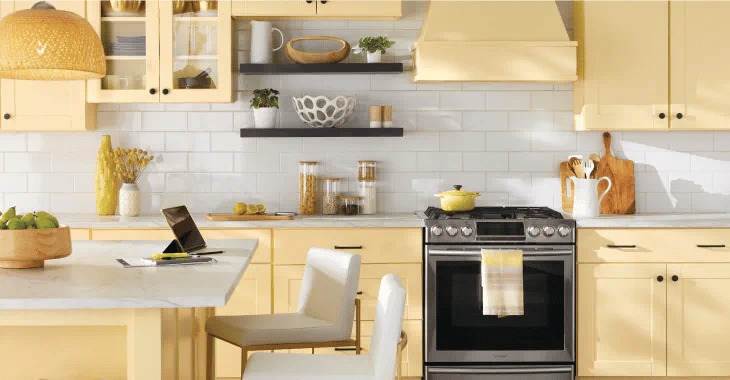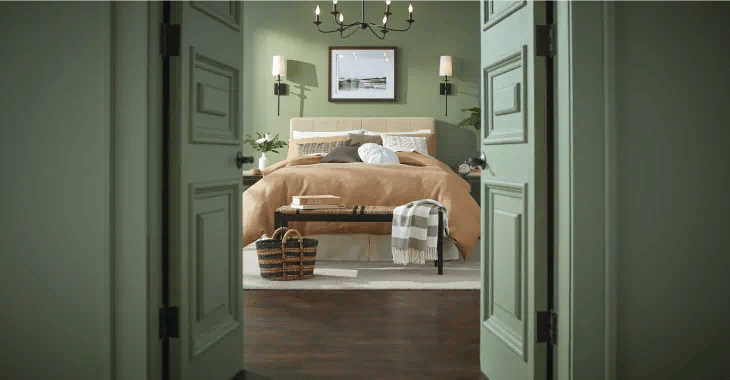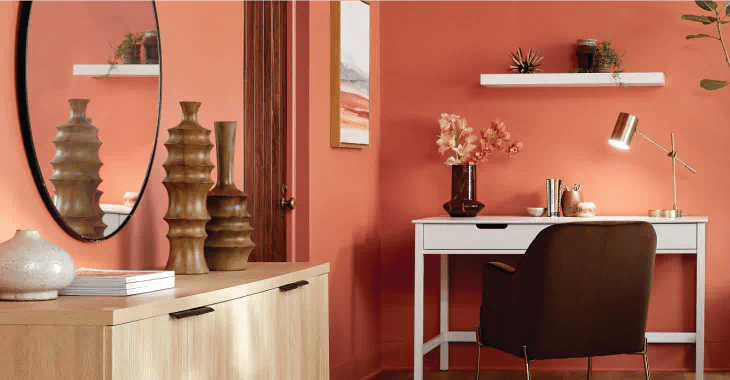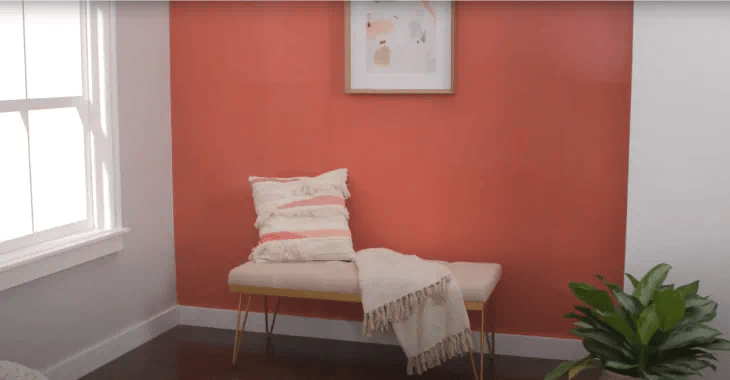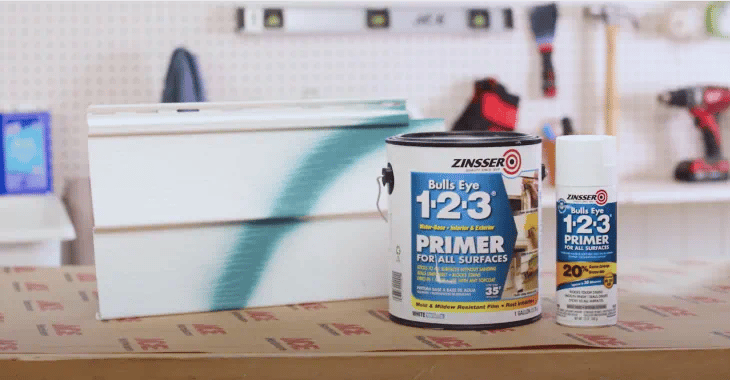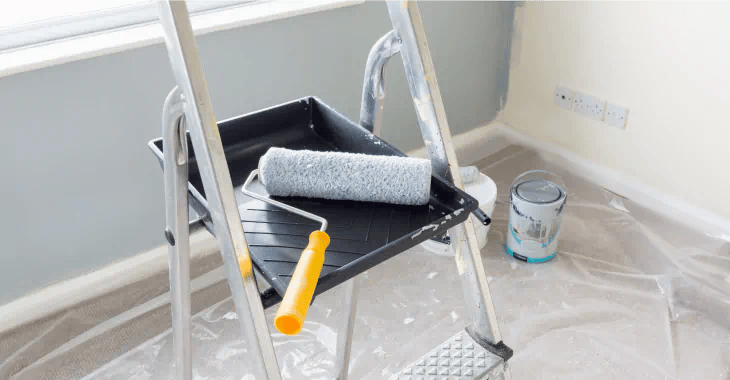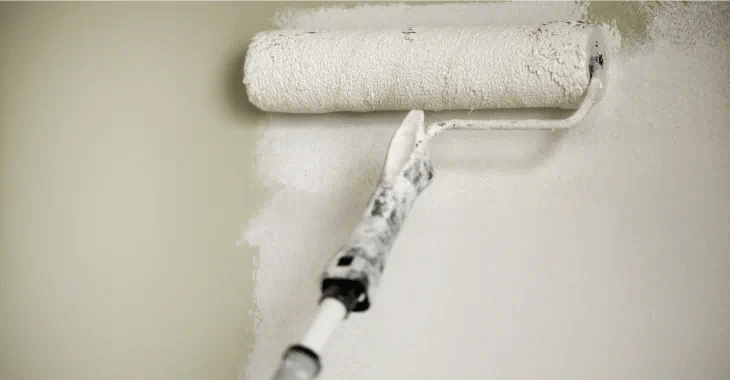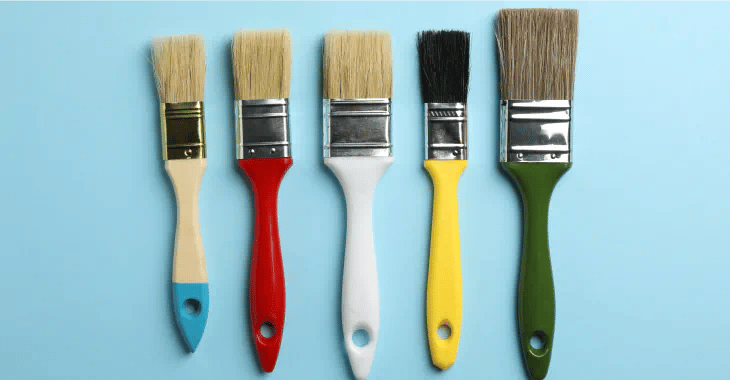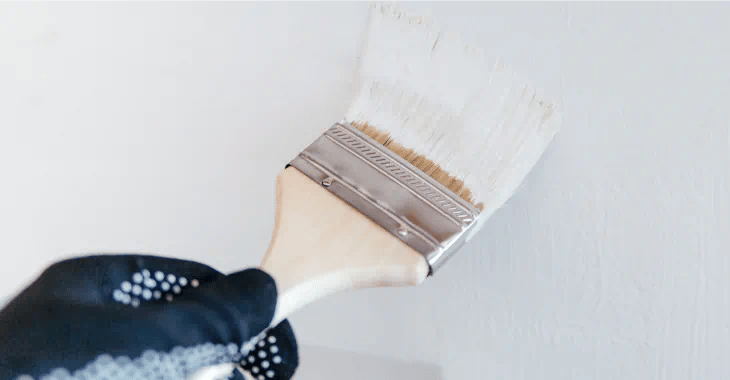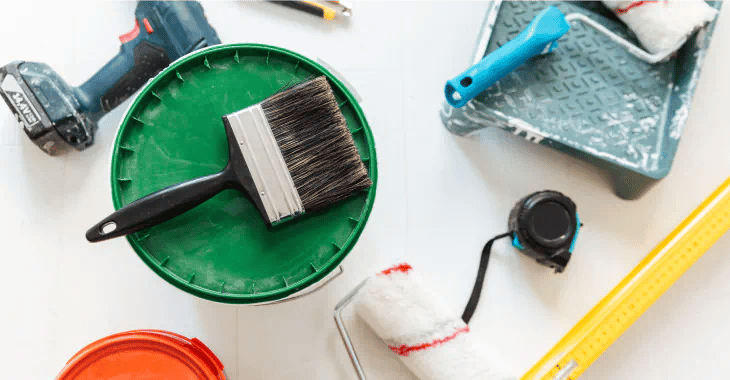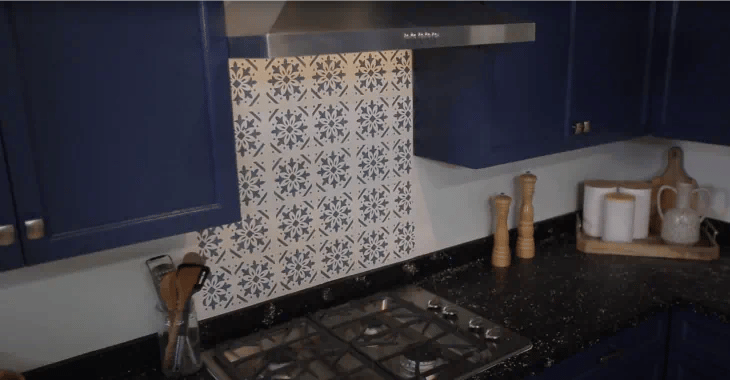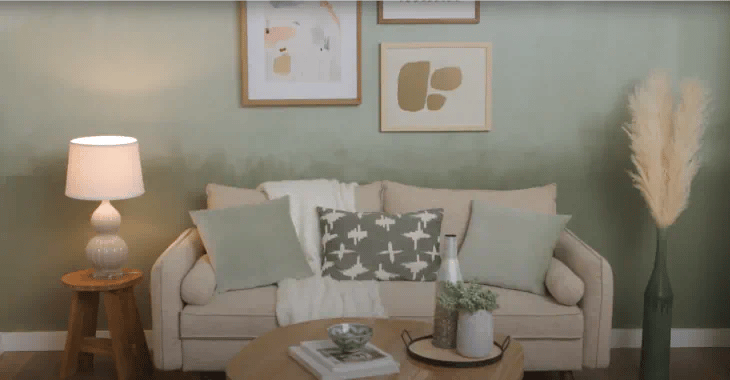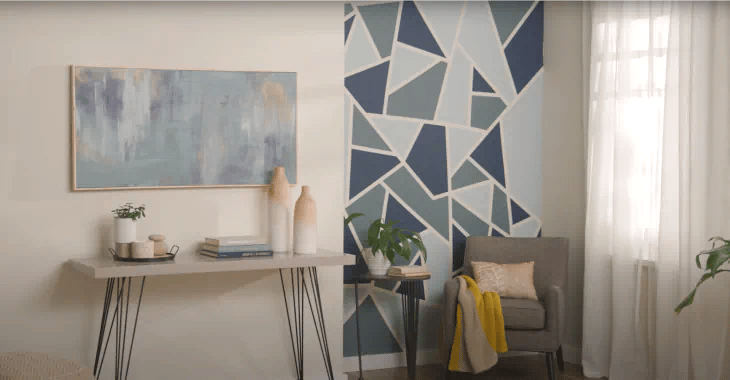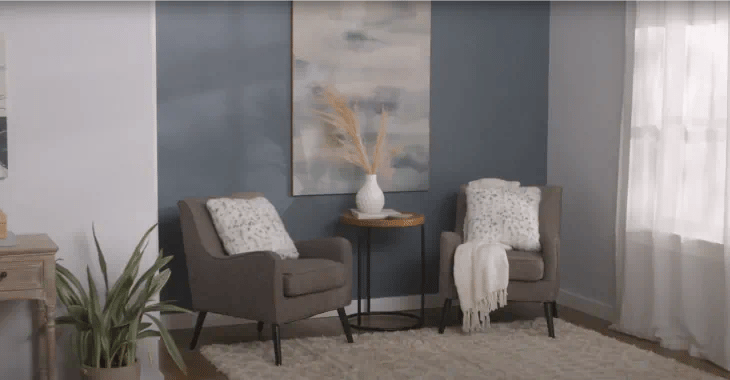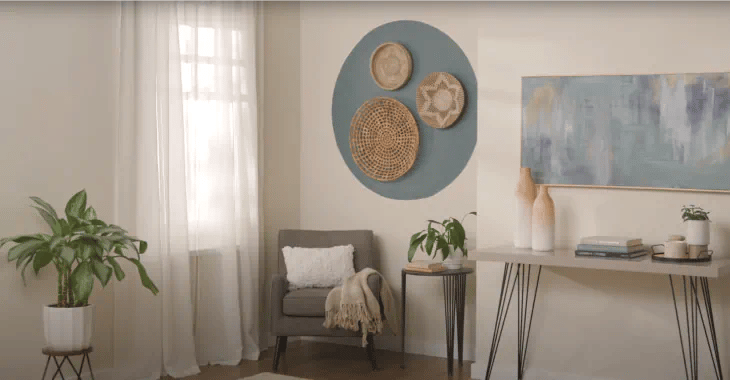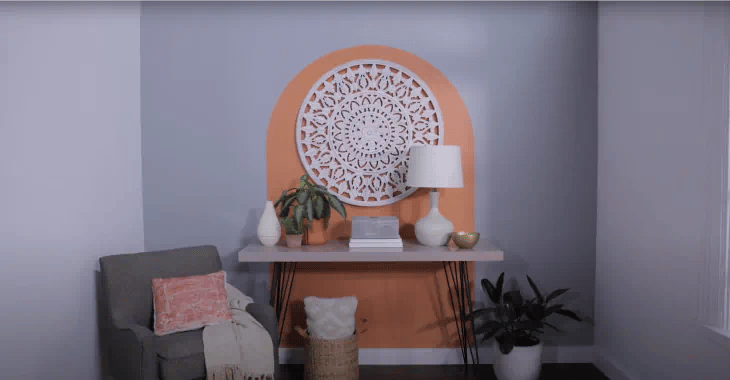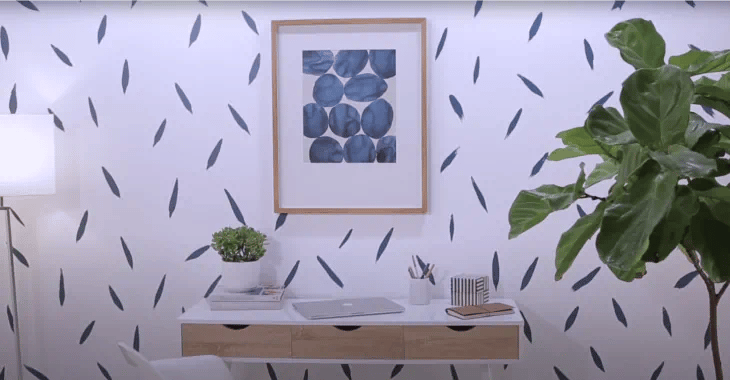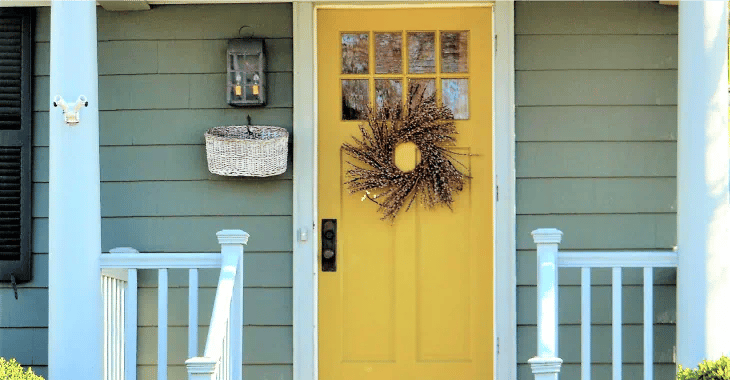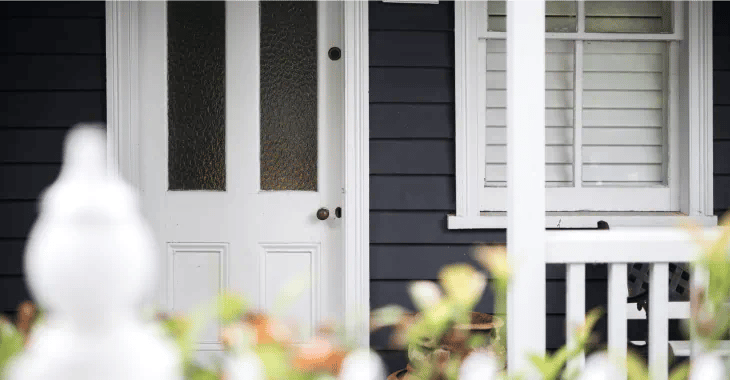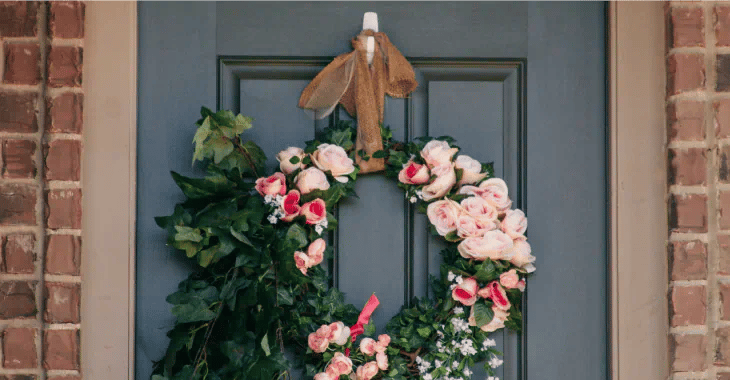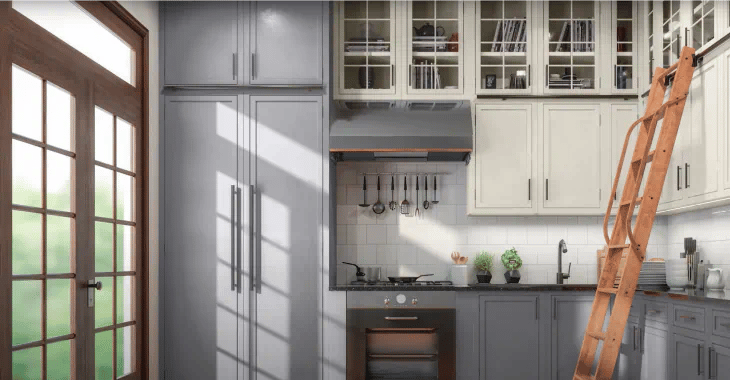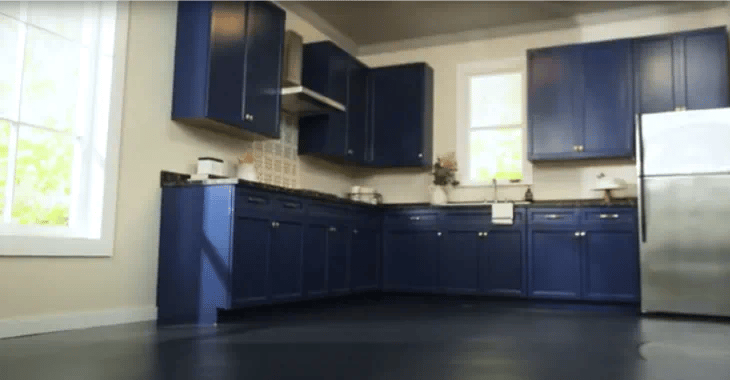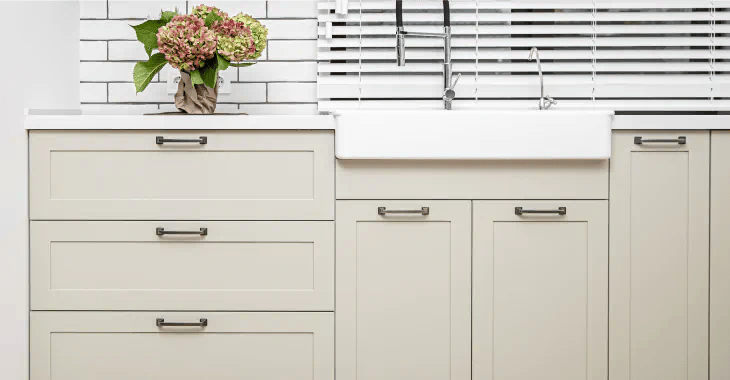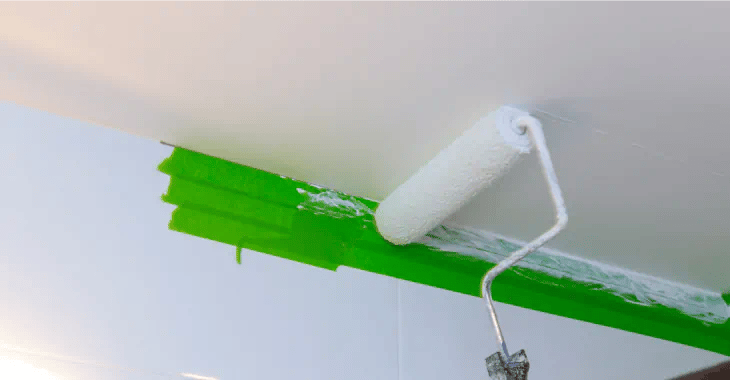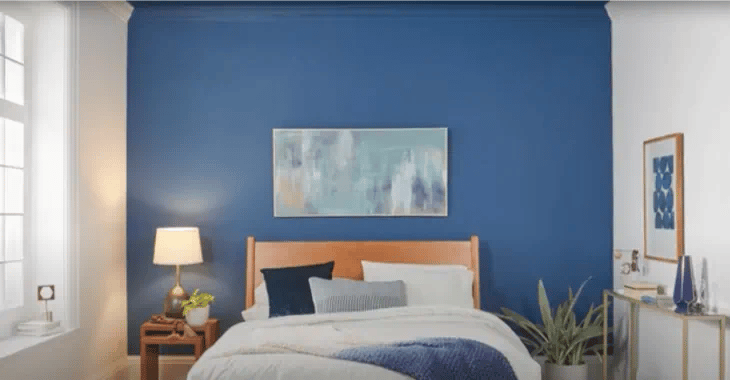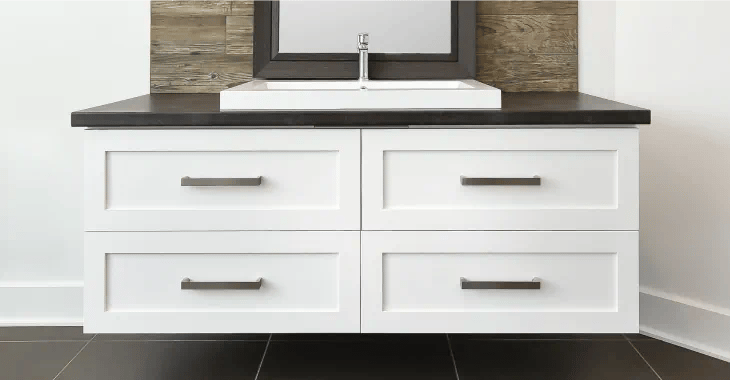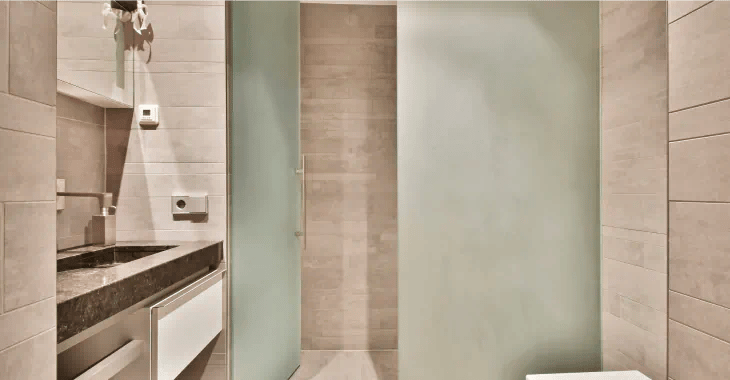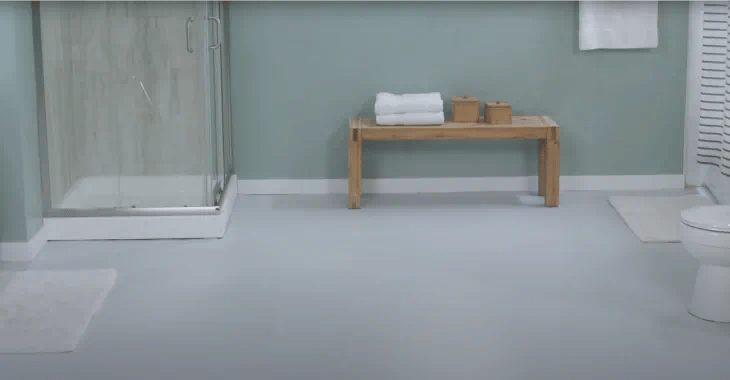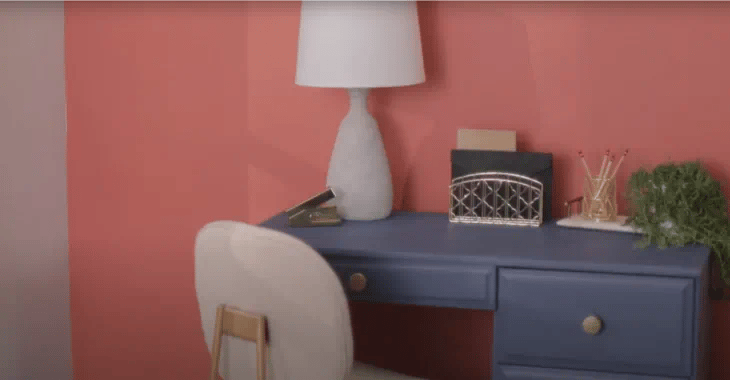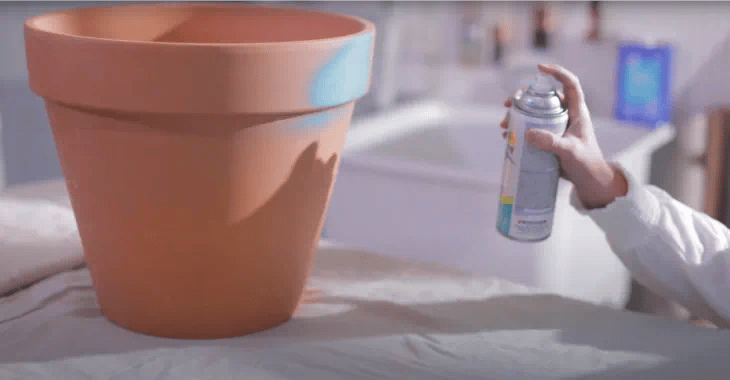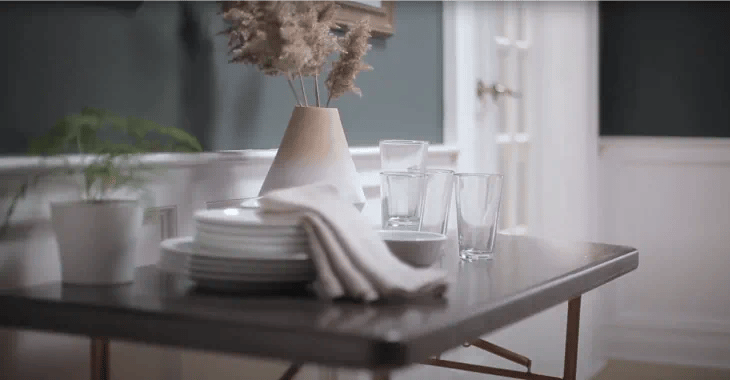Explore All Colors
Be Inspired
Videos
Color FAQs
I love color, but I'm not sure how or where to use it, and I am nervous about making a mistake. What is the best place to start integrating a fun, new paint color into my home?
Start small. Try experimenting with a favorite color in a small bathroom or guest room or on an accent wall. It's a great way to see immediate results and a quick fix if you find that particular color is not for you. Think of it as an adventure!
Where is the best place to find paint color inspiration for the rooms in my home?
One of the most foolproof ways to inspire a great color scheme is to pull colors from something that you already have and know you plan to keep in the room-like a favorite piece of artwork, curtains, bedding, furniture fabrics or even a cherished family heirloom.
What does it mean for a color to be "warm" or "cool"?
All colors in the spectrum can be classified as being either warm or cool. Reds, oranges and yellows are considered warm colors, which can help create an energizing effect in the room. Greens, blues and purples are considered cool colors, which tend to create a calming effect.
What are neutrals?
Neutral colors are low-intensity colors, such as grays, beiges, tans and taupes. Because of their low color intensity, they work well with even the brightest colors. Neutral colors are known to "play well" with others because they go with everything, making them an excellent choice to use in any room of your home.
Are there certain colors that are better suited than others for different rooms of the home?
When choosing a room color, it's important to think about the mood you want to create in that room. For example, soothing neutrals and softer, more muted colors can help to create a restful, relaxing mood, which is perfect for bedrooms and bathrooms. Where brighter and more vibrant colors tend to create a livelier environment, which is better suited for the more active areas of your home such as a kitchen, dining area, craft room or a child's playroom.
Are there any rules I need to keep in mind when selecting colors for rooms that are visible from other rooms in my home?
It is important to think about how colors flow from room to room to room. This is why neutral colors are a wise choice for hallways, entryways or other highly visible rooms in your home because neutrals go with every color.
How can the lighting in my home affect the colors I choose?
Lighting can have a huge effect on a color's appearance. For example, natural daylight shows the truest color, while incandescent lighting brings out warm tones and yellows, and fluorescent lighting casts a cooler, bluer tone.For best results, we recommend purchasing a pint tinted to your favorite color and painting a swatch on your wall, then viewing your color at different times of the day and night in the light sources used in that room.
What is the difference between a primary, secondary and tertiary color?
There are three primary colors: red, blue and yellow. Secondary colors are made by combining any two primary colors together (for example, yellow + blue = green, blue + red = purple, red + yellow = orange). Tertiary colors fill in the six gaps between the primary and secondary colors: red-orange, blue-green, red-violet and so on.
What is color scheme?
A color scheme is a combination of colors used together to create a beautiful designer look. Some of the most popular color schemes for home decor are: complementary, analogous and monochromatic.
A complementary color scheme combines colors that are opposite from each other on the color wheel (like red paired with green or blue paired with orange)-creating a classic and timeless look. An analogous color scheme uses colors that lay directly next to each other on the color wheel (such as blue paired with green and purple, or red paired with yellow and orange).
An analogous scheme using cool colors will give rooms a calming and soothing look, while a warm analogous scheme will create an energizing effect.
A monochromatic color scheme incorporates a mixture of lighter and darker shades of the same color (like a deep navy paired with a mid-toned blue and a pale, sky blue), which creates a stylish and sophisticated look.
Finish FAQs
What is an oil-based paint?
These paints have resins and thinners in them that evaporate when the paint dries. This process forms a hard coating and provides heavier coverage on the first coat, effective penetration and excellent adhesion. They are particularly good for chalky surfaces and those that already have several layers of oil-based paint.
What does the term "gloss" mean?
It refers to how shiny the paint is. Manufacturers use terms such as flat, satin, semi-gloss and hi-gloss to describe their paints, but there are no specific industry standards.
What type of paint should I use in my kitchen?
Hi-gloss paints are great for high-traffic areas because they provide a tough, washable finish that also resists water and grease. Use them on kitchen and bathroom walls, kitchen cabinets, banisters and railings, trim, furniture, doorjambs and windowsills. However, the gloss will make surface imperfections more noticeable, so you will have to work a little harder to ensure a good finish. A semi-gloss provides a little less durability but is a little easier to work with.
Where should I use a flat paint?
These are also called matte finishes and they are good for walls and ceilings in lower-traffic areas.
What is an eggshell finish?
It's a paint that has a little more sheen than a flat paint, which makes it easier to clean and gives it a more lustrous appearance. It can be used in place of semi-gloss to provide a less shiny finish. Some manufacturers market a satin or silk finish, which is usually a little shinier than an eggshell but less shiny than a semi-gloss.
What is the difference between a wood stain and a varnish?
A wood stain is used to change the appearance of the wood, such as to bring out the definition in the wood grain or match the look of another species of wood. Varnish, which may be water- or oil-based, provides a clear, transparent coating that is durable and hard. Varnishes also come in a variety of shines from flat to high-gloss, and they may be water- or oil-based.
What is the difference between solid-color and semi-transparent stains?
Semi-transparent stains provide a color to the wood, but still allow the texture and natural grain to show through. Solid-color stains allow the texture to show, but not the grain.
Prep & Tools FAQs
What is the advantage of a natural-bristle brush?
Bristle has naturally split ends called flags, which help hold the paint in the brush so that it is released throughout the stroke instead of all at once.
Should I use a natural bristle brush with a latex paint?
No. Just remember that humid weather can make someone's hair turn frizzy. Water-based paints do the same thing to natural-bristle brushes, so you will want to use a synthetic brush with latex paint.
What type of brush works best with oil-based paint?
Natural bristles are best for most oil-based finishes, including varnishes and stains. Their soft tips leave fewer brush marks.
Should I buy a paintbrush with angled bristles or cut square?
An angle-tipped brush allows you to put the tips of the bristles on the work at the natural angle that the brush is held. In addition, an angle-tipped brush puts slightly more bristle area on the work than a square-tipped brush of the same width.
Can I use the same brush for both latex- and oil-based paint?
Yes, but you must make sure you clean them extremely well. It's best if you just buy two sets of brushes-one for latex and one for oil-based paints.
How wide of a brush should I use?
The best answer is whatever you feel comfortable with. A bigger brush holds more paint and applies it more quickly, but it is also harder to control.
How do I choose the right roller cover?
Roller covers vary in pile or nap length, and it's essential to choose the right pile length for the surface texture you're painting. A general guideline is:
- Smooth (3/16" or 1/4" nap): for walls, floors and fine finishing.
- Rough (3/4" or 1" nap): for light stucco walls and masonry floors.
- Extra Rough (1 1/4" nap): for brick, block, masonry and stucco.
What are the quality features in a good roller?
Good roller frames have a compression-type cage, which is also convenient, because their covers can be removed quickly and easily. Also, look for a handle that has a threaded end so you can use an extension pole for painting floors and ceilings.
How do I know which caulk or sealant to buy?
This depends on a variety of factors: Where will the sealant be applied? What type of surfaces will be bonded or caulked? How much stress or movement will the joint be subject to? What other performance requirements will it need to meet?
What kind of caulk should I use around window frames?
Latex caulks are good for filling these kinds of gaps. They clean up with water and most are paintable. However, they must be applied in temperatures of more than 40° Fahrenheit.
Are there different kinds of latex caulk?
Yes. For example, vinyl latex is good for small cracks. Acrylic latex is a little more flexible and lasts longer, up to 10 or 15 years. Siliconized acrylic latex should not be confused with a pure silicone caulk. It is a medium-performance caulk that provides some water resistance and lasts up to 25 years or more.
Do I need to apply anything to the wall before papering?
You should apply wall sizing to all walls. It prepares the surface and acts as a first coat. It makes a smooth surface and prevents paste from soaking into the wall.
What tools do I need to remove old wallpaper?
A wallpaper remover, a three-inch wallpaper stripping tool, a bucket and a sponge. You can also buy a tool that will score the paper before you apply the remover.
I need a good stepladder. What should I consider?
Wood stepladders are sturdy and the least expensive, but they are heavy. Aluminum stepladders are lightweight but more expensive than wood stepladders. Fiberglass stepladders combine strength and lightweight and are the most expensive.
I'm going to be painting a table that has a gloss finish. Do I need to prepare the surface?
You should use a liquid de-glosser, which works without sanding and produces a slight tack for better adhesion of the new finish.
How do I tell which steel wool is finer?
The smaller the number, the finer the steel wool.
What does a number such as 120 on sandpaper mean?
These numbers stand for the number of particles per square inch. The higher the number, the finer the sandpaper.
What is a tack cloth?
It's a cloth that picks up and holds dirt, sand and other debris. You should use one on any surface before you apply a coat of paint or any other finish.
Clean Up FAQs
How long can I wait to clean up after painting?
The sooner you clean your brushes after you are finished with your paint project, the easier they will be to clean. Don't put this task off if you want to keep your brushes in good shape. If for some reason you can't clean your brush right away, wrap the brush in plastic cling wrap to prevent it from drying out. In the case of a roller, wrap it in a sealed plastic bag. Then wash as soon as possible.
How do I clean my paintbrush after using latex paint?
Latex paint simply requires warm water and a mild detergent or hand soap for cleanup. For best results, fill a bucket full of warm water in a utility sink, if possible. Then rub the brush back and forth in the bucket of water to try to release as much of the paint from the bristles as possible. Then rinse the brush under clean water and continue to discard and refill the water until it runs clear. Using a metal painter's comb is also recommended to help loosen any stubborn bits of dried paint from the brush. Rub some hand soap into the brush and massage it into the bristles with your hands for several minutes. Then rinse with warm water until the water runs clear and tap the brush gently against the edge of the bucket to remove extra water from the bristles. Then comb one last time with a
How to I clean my roller cover after using latex paint?
Partially fill a large bucket or utility sink with warm water and roll the roller back and forth. Continue to discard and fill the bucket with fresh, warm water, rolling the roller back and forth until the water runs clear. The curved section of the 5-in-1 tool is designed to help remove paint from the roller. Run this curve up and down the roller under warm running water to clean the roller. Then hang the roller to dry after cleaning. Alternatively, roller covers are relatively inexpensive and are designed to be disposed of after use, so weigh the pros of washing and reusing or simply disposing of the roller cover after you have finished your paint project.
How do I clean my brushes and/or rollers after painting with oil-based paint?
An To clean your brushes or rollers after using an oil-based paint, use the same process as you did for the latex paint cleanup, except use a paint thinner or solvent-based paintbrush cleaner instead of water. brush allows you to put the tips of the bristles on the work at the natural angle that the brush is held. In addition, an angle-tipped brush puts slightly more bristle area on the work than a square-tipped brush of the same width.
What is the best way to remove painter's tape after I have finished painting?
If using FrogTape®, remove tape immediately after painting. For all other types of painter's tape, wait until the paint has fully dried before removing the tape. Peel the tape off slowly and gently-never rip it off quickly or it may pull up some of your newly painted surface along with the tape.
How do I clean paint spills or splatters off of windows?
Any paint on windowpanes can be easily scraped off with a razor blade. The glass can then be washed with warm water and a paper towel. It is recommended to wait approximately two weeks after painting your window trim to have your windows professionally cleaned as it may take that long for the paint to fully cure.
How do I clean paint spills or splatters off of fixtures?
Any spots of paint on hard surfaces can usually be removed by wiping with a damp cloth. For more stubborn spots, try scraping very gently with a blunt knife, taking care not to scratch any delicate surfaces.
How do you clean paint off of fabric?
If you accidentally happen to spill paint on your clothing or on other fabric, it will be easiest to remove once the paint is dry. Otherwise you run the risk of embedding the paint into the fabric, which will make it nearly impossible to remove. Try working it out gently with a small brush, warm water and a mild detergent to avoid further damage to the fabric.
How do you clean paint off of carpeting?
Like with fabric, first wait for the paint to dry so as not to embed the paint further into the carpeting. Depending upon the type of carpeting, it may be possible to cut the dried bits of paint off with scissors or to work out the dried paint using a blunt knife. Using warm water and a clean white rag, blot but do not scrub the paint to work it out of the carpeting, as this may damage the pile. Always work in the direction of the pile, then blot dry.
How do you clean paint off of your skin?
The best way to keep paint off of your skin is to use gloves and protective clothing, but if you do get paint on your skin, there is a vast array of special hand cleaners available that are extremely effective in removing paint from the skin without causing any irritation.
What should I do if I have leftover paint after completing my project?
Here are some helpful recommendations for what to do with any unused paint you might have: Leftover Tips >>
Accents FAQs
What can be used to produce a nice, smooth surface when I finish furniture?
Using a fine steel wool between multiple coats will give you a smoother surface. Be sure to clean the surface with a tack cloth before painting each additional coat.
How does a sandpaper holder help me sand?
A sanding block helps speed up sanding jobs, relieves strain on your hands and makes your sandpaper last longer.
I want to sand several chair legs, but I'm having difficulty because of the contours and hard-to-reach areas. Can you help me?
Try a flexible sanding sponge.
About
Find the right house color for your space with the pristine colors, quality brands and helpful tools from The Paint Studio at Ace Hardware! Browse home paint inspiration and useful tips, then head over to your local Ace to find everything you need for your next paint project.
Paint Inspiration from Ace Hardware
Discover the latest home color trends to create a fresh and inspired look. View popular color palettes for bedrooms, kitchens, living rooms and more, and explore our paint project inspiration for unique DIY ideas.
Learn how to use house paint colors to create accent furniture and décor pieces, as well as incorporate creative patterns into wall paint and shelving. Find even more inspo with our color of the month, where we pair an Ace color favorite with complementary hues and gallery ideas to bring you stunning home palettes.
Quality House Colors from Leading Brands
Find the perfect blend of color and quality with leading paint brands from Ace.
- Benjamin Moore: Known for rich hues and smooth application, Benjamin Moore paints are a timeless favorite for indoor and outdoor renovations. This premium brand formulates products that help you achieve beautiful, lasting results every time you paint. Shop a selection of interior and exterior paints with flat, matte, eggshell, satin/pearl, and semi-gloss finishes.
- Magnolia Home by Joanna Gaines: For a classic look, choose from Magnolia Home paints in a selection of elegant colors and finishes. The stain-resistant quality helps preserve the rich hues, delivering the durability you need for every space.
- Clark + Kensington: When you are looking for a convenient all-in-one application, try Clark + Kensington's combination paint and primer. With options for interior and exterior spaces, this paint and primer blend cuts down on the work to deliver beautiful results in less time.
Explore House Paint Colors
Get paint color help for your space with the color palette tool from The Paint Studio. Explore a wide array of house paint colors, with options for exterior home colors and interior paints.
Browse classic neutrals to create an elegant foundation or opt for a selection of vibrant hues for an eye-catching pop of color. With thousands of shades to choose from, The Paint Studio at Ace makes it easy to create your perfect color palette.
Once you've found a home color you like, try a sample size of the paint before committing to a full supply. Sample sizes are available for many popular colors and let you test out the paint in your own home to make sure it looks just right.
Painting Tips and Tools
Not sure how a new color would look in your home? Try out our paint visualizer tool to test out a selection of hues:
- Upload a photo to explore how different paints will look in your home.
- Once you've found the perfect shade, head over to the paint calculator tool to determine how much to buy.
- Input the size of your room, the number of windows and doors, and your estimated number of coats, and the tool will provide an estimate of how much paint you will need.
Find even more helpful tutorials on how to choose and use paint color to create the perfect look in your home with our resources.
Shop House Paint Colors from The Paint Studio at Ace
Get everything you need to make your next paint project a breeze with The Paint Studio at Ace Hardware. Browse home inspiration, beautiful paint colors, quality brands and more, or drop by your local Ace store for in-person advice on finding the perfect paint. Explore the best exterior paint colors and home paint colors for you today!









